When it comes to rubber mat flooring for your gym, there are a few things you need to take into account. The thickness of the rubber mats is one factor, as is how they will be installed. You also need to decide on the type of rubber matting you want. This guide will provide an overview of all these factors so that you can make an informed decision about rubber mat flooring for your gym.
Thickness

The thickness of rubber mats is an important consideration. The thicker the mat, the more cushioning it will provide. This is important for two reasons.
- First, it will reduce the impact on your joints when you are working out.
- Second, it will help to reduce noise levels in your gym.
It’s also important to note that in both commercial and home gyms if you intend to drop weights on the rubber tiles then you will need to ensure the rubber is at least 1/2 inch thick to prevent damage to the flooring beneath.
Installation
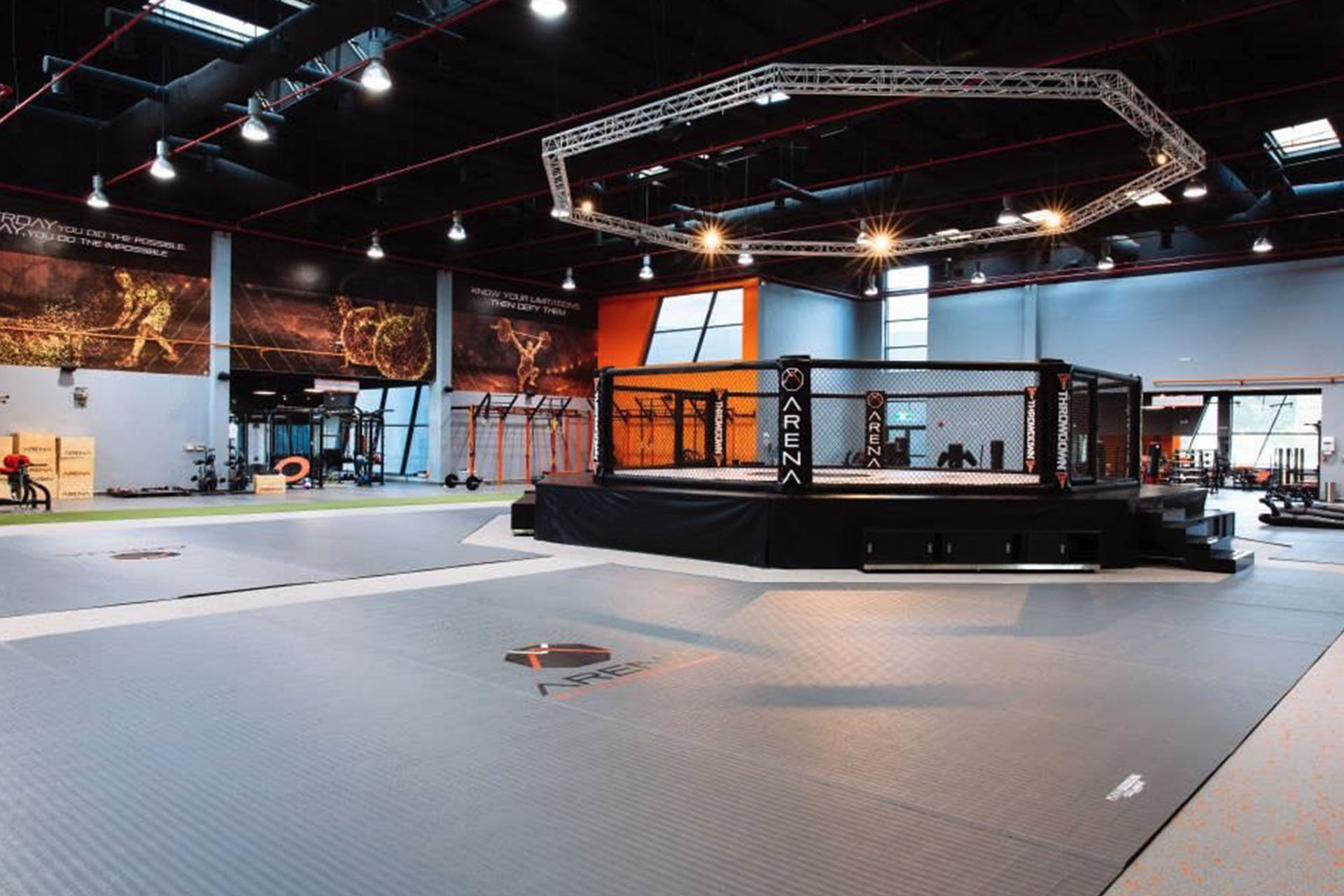
Rubber mats can be installed in a variety of ways. The most popular method, especially in commercial gyms which are high-traffic environments, is to glue them down to the floor. This ensures that they stay in place and do not move around during use.
Another option is to interlock the mats so that they fit together like a puzzle. This installation method is often used for temporary flooring, as it can be taken apart and moved to another location if necessary. These gym floor mats are more common in home gyms.
Interlocking vs Glue Down Rubber Floor Tiles
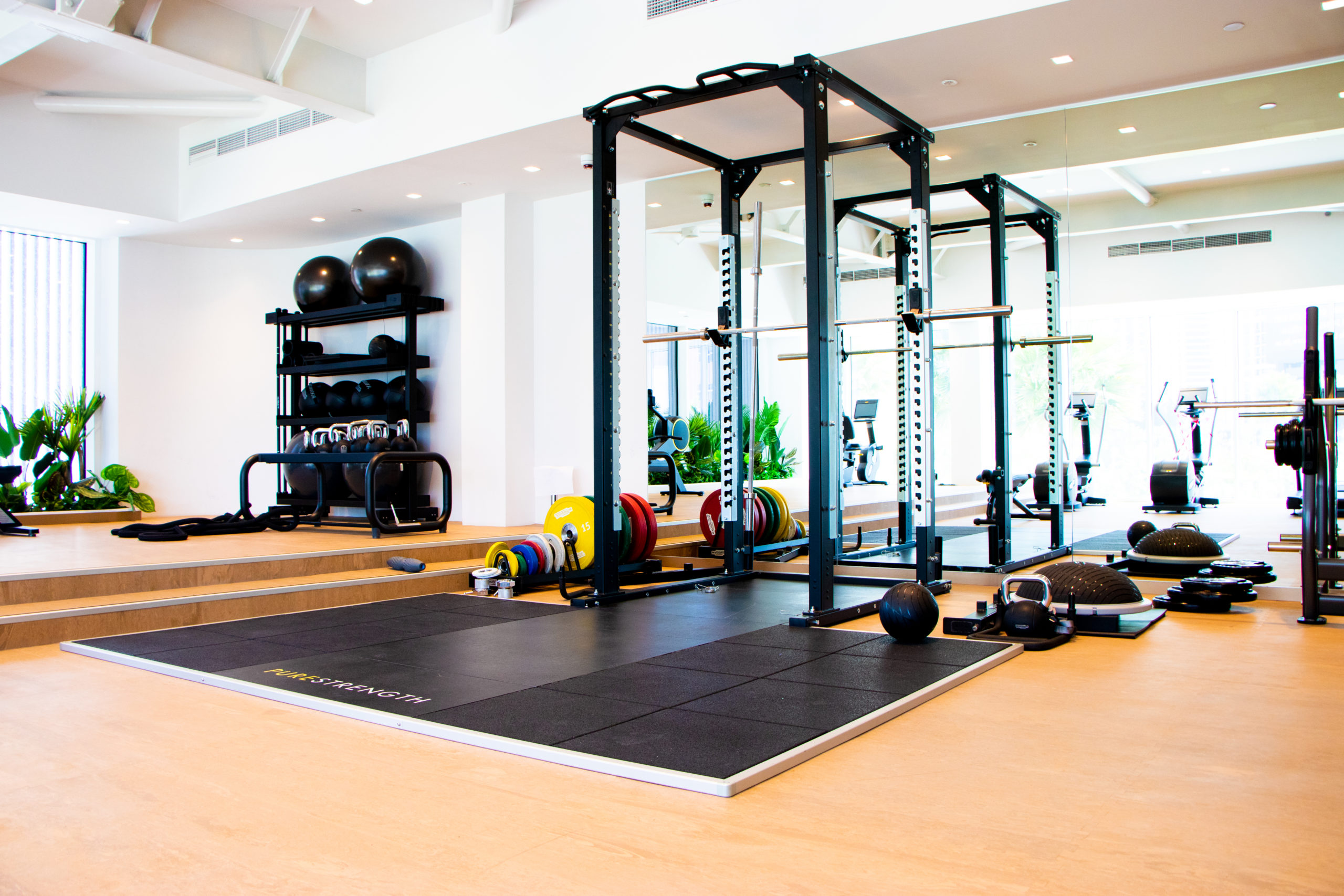
Interlocking tiles are easy to install and can be taken apart if necessary. Glue-down tiles are more permanent, as they are glued to the floor. Both types of tiles have their own advantages and disadvantages.
- Interlocking rubber floor tiles are easy to install and can be taken apart if necessary. The main disadvantage of these tiles is that they can move around during use, which can cause them to become damaged.
- Glue-down rubber floor tiles are more permanent, as they are glued to the floor. This prevents them from moving around during use. The main disadvantage of these tiles is that they are more difficult to install.
Types of rubber mat flooring
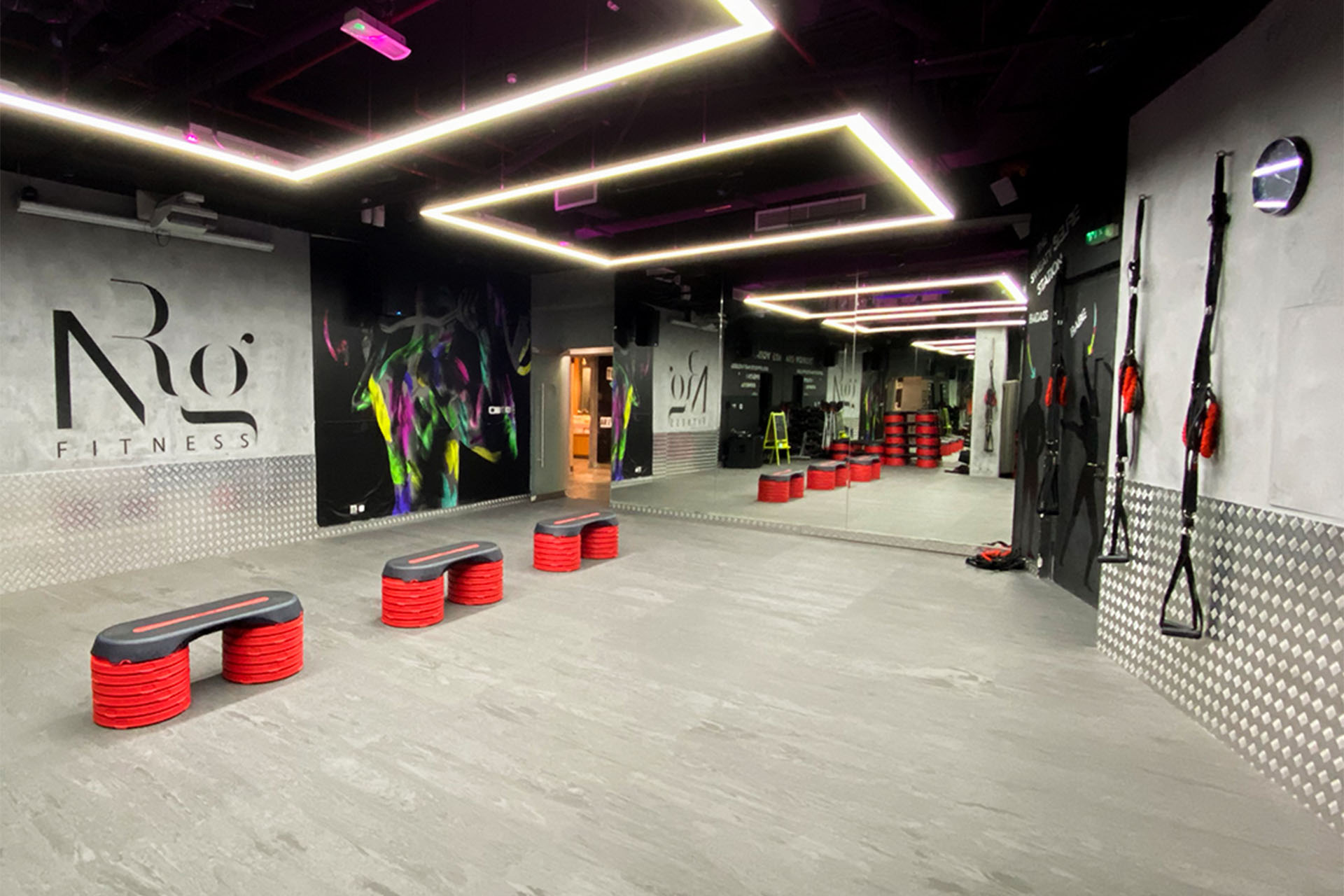
There are two main types of rubber mat flooring: solid and perforated.
- Solid rubber mats are the most popular type, as they provide a smooth surface that is easy to clean.
- Perforated rubber mats have small holes throughout their surface. These holes allow water and air to circulate, which helps to keep the mat dry and odour-free.
How to select the right rubber floor tiles for your gym

- The first thing you need to decide is what size of rubber floor tiles you need.
- If you have a smaller space, then you can opt for interlocking rubber floor tiles. These are easy to install and can be taken apart if necessary.
- If you have a larger space, then you may want to glue the rubber floor tiles down. This will ensure that they stay in place and do not move around during use.
- You also need to decide on the type of rubber matting you want. Solid rubber mats are the most popular type, as they provide a smooth surface that is easy to clean. Perforated rubber mats as mentioned earlier are more difficult to clean.
- We supply rubber mat flooring from a variety of industry-leading brands which have premium rubber products.
Advantages and Disadvantages of Rubber Mat Flooring
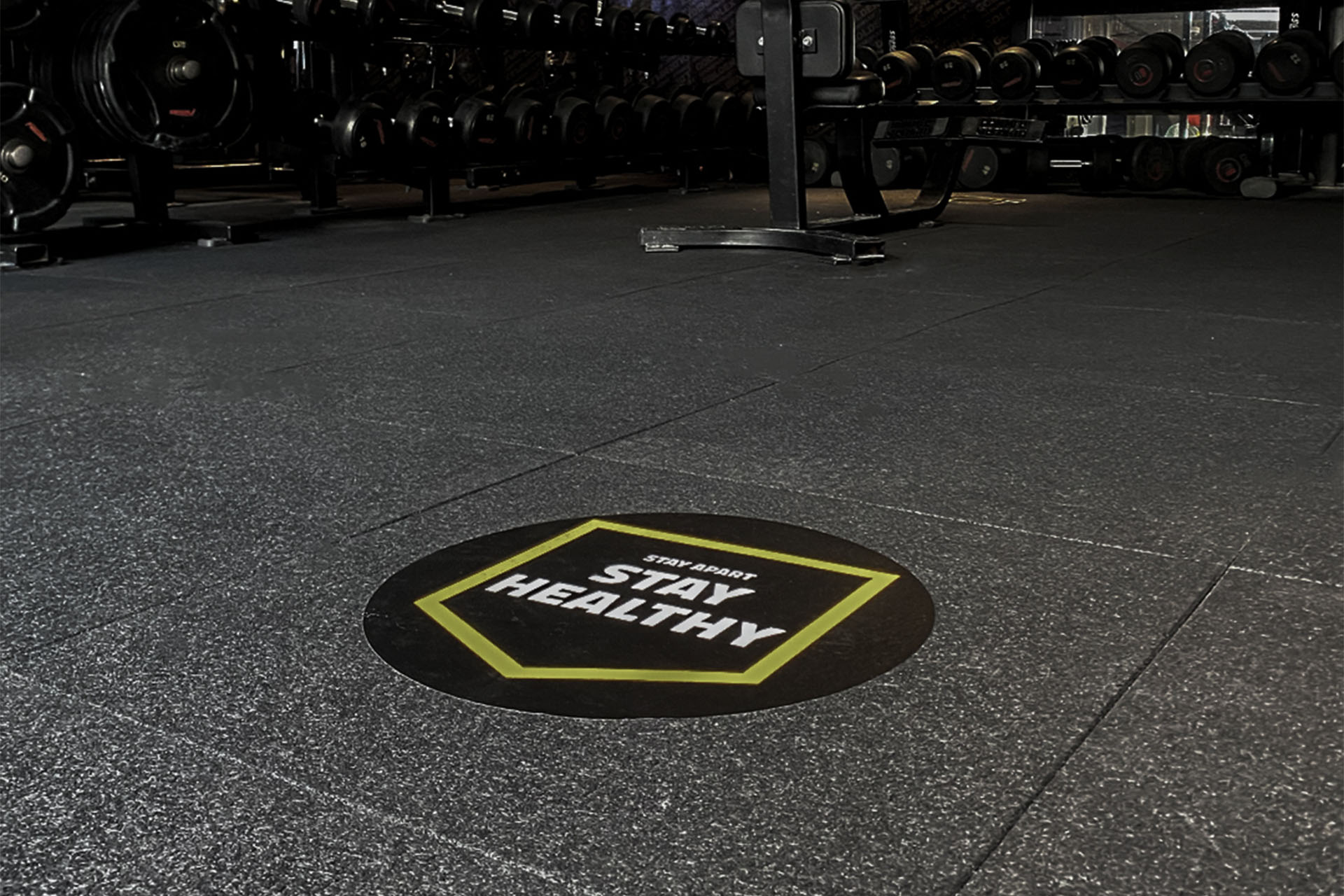
Advantages:
- Rubber mats are easy to clean
- They provide a smooth surface
- They are available in a variety of colours and designs
- They are durable and long-lasting
- They are slip resistant
Disadvantages:
- Rubber mats can be expensive
- Rubber mats can be slippery when wet
- Rubber mats can be difficult to install
When deciding whether or not rubber mat flooring is right for your gym, it is important to consider both the advantages and disadvantages. Rubber mats are easy to clean and provide a smooth surface, but they can be expensive and difficult to install. You need to decide which factors are most important to you in order to make the best decision for your gym.
The Different Types of Rubber Used in Commercial Gym Flooring
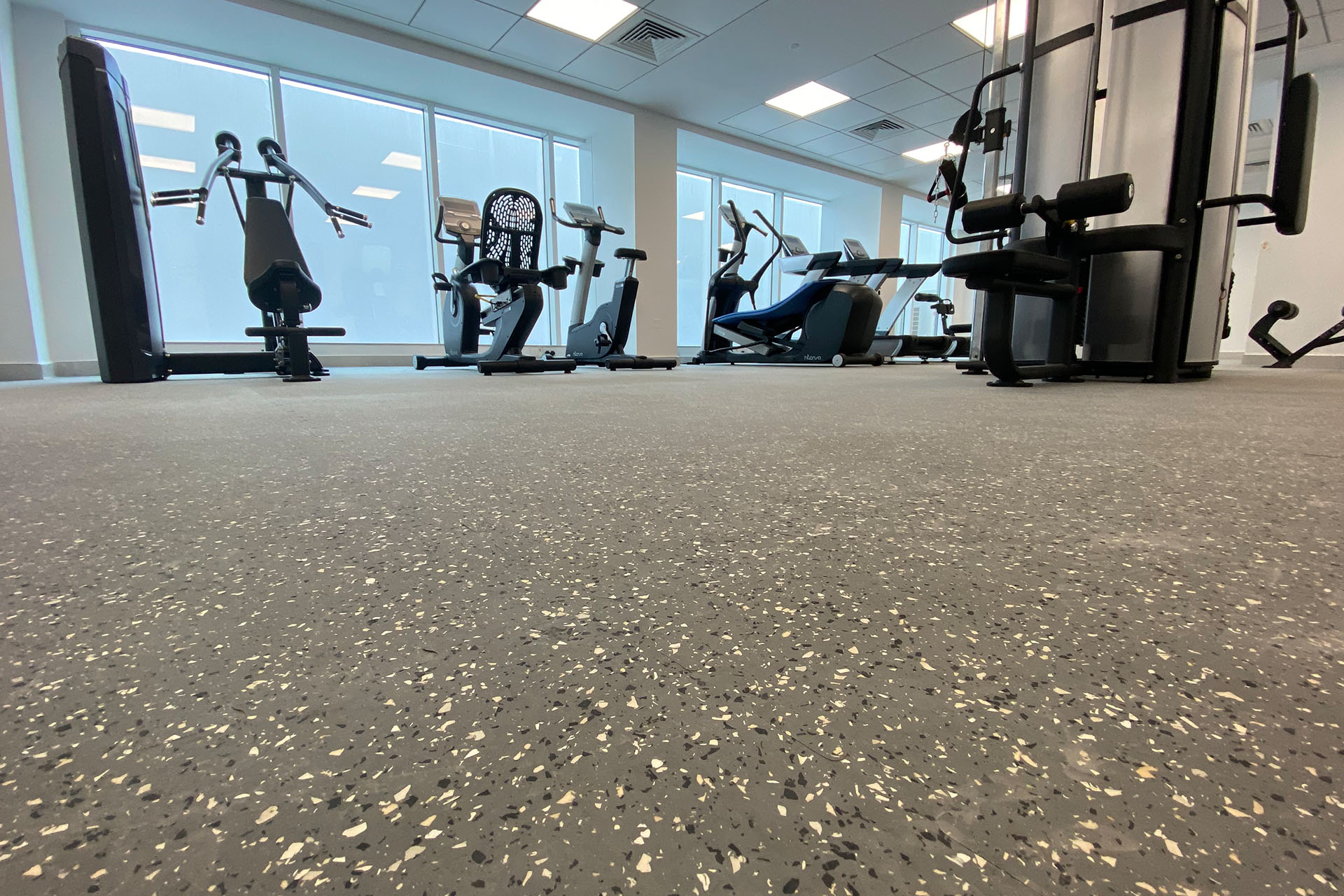
There are three main types of rubber used in gym flooring: recycled rubber, synthetic rubber, and natural rubber. Recycled rubber is made from old tires that have been shredded into small pieces. Synthetic rubber is made from petroleum products such as oil and gas. Natural rubber is made from the sap of rubber trees.
Each type of rubber has its own advantages and disadvantages. Recycled rubber is the most affordable option, but it is not as durable as synthetic or natural rubber. Synthetic rubber is more expensive, but it is more durable and long-lasting. Natural rubber is the most expensive option, but it is the most sustainable and environmentally friendly.
You need to decide what type of rubber you want for your gym flooring based on your budget and your needs. If you are looking for durable flooring that will last long-term, then synthetic rubber is the best option. If you are looking for affordable flooring that is still eco-friendly, then recycled rubber is the best option.
Our Rubber Flooring Products
DuraTRAIN
A premium fitness flooring system engineered to maximise comfort, durability and functionality within CrossFit areas, dumbbell areas or any facility with noise and vibration sensitivities.
PaviFLEX
One of the worlds leading producers of rubber flooring, with a weekly average production of 50,000m2 in their Alicante factory.
DOLLAMUR
Looking to install a UFC mat in your home or commercial gym? Ultimate American-made athletic sports mats for high-performance, shock-absorbing and low-impact athletics.
Indigo Fitness
The perfect solution for a UK-designed and manufactured bespoke strength and conditioning rubber floor.
Signgrass
Fancy a synthetic section in your gym? Signgrass offers custom synthetic grass tracks personalised according to your wishes.
Rubber flooring Dubai FAQs
How long do rubber mats last?
When properly installed and maintained, rubber mats can last up to 20 years.
Can rubber mats be installed over carpets?
No, rubber mats cannot be installed over carpet. The carpet must be removed before rubber mats can be installed.
How do you clean a floor mat?
Rubber mats can be cleaned with a broom, vacuum, or mop. For more stubborn dirt and stains, rubber mats can be cleaned with a rubber mat cleaner.
What is the best thickness for rubber mats?
The best thickness for rubber mats depends on their intended use. For example, rubber mats used in weightlifting areas should be at least ¼ inch thick to protect the flooring underneath from dropped weights.
Send us an enquiry
"*" indicates required fields

